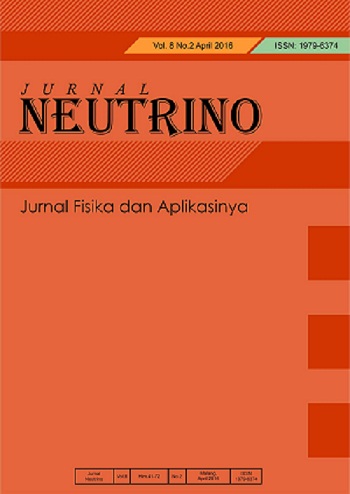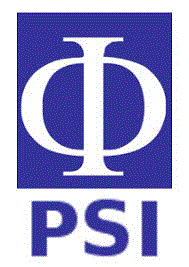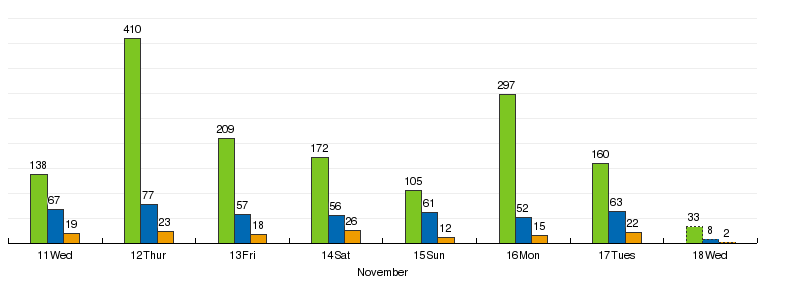STUDY OF LIFETIME OF COPPER AND ALUMINUM ELECTRODES IN ELECTROLYSIS OF SEAWATER PROCESS TO PRODUCE HYDROGEN GAS
Abstract
This study aims to analyze the effect of the type of electrode in the electrolysis of seawater for the production of hydrogen gas. The methods used include two types of electrodes, namely copper and aluminum and also design tools for electrolysis of seawater. Data collection is carried out every 20 minutes, the electrolysis process takes place at a constant voltage of 12 volts. The results obtained showed that the copper electrode produced 732 ml of hydrogen gas and a lifetime of 820 minutes with an average rate of 0.893 ml/minute and the highest hydrogen yield of 3.83% at 400 to 440 minutes while the aluminum electrode produced 693 ml of hydrogen gas. and a lifetime of 680 minutes with an average rate of 1.019 ml/minute and the highest hydrogen yield of 5.92% at 120 minutes.
Keywords
Full Text:
PDFReferences
Fazlunnazar M, Hakim L, Meriatna M, Sulhatun S. PRODUKSI GAS HIDROGEN DARI AIR LAUT DENGAN METODE ELEKTROLISIS MENGGUNAKAN ELEKTRODA TEMBAGA DAN ALUMUNIUM (Cu DAN Al). Jurnal Teknologi Kimia Unimal. 2020 May 1;9(1):58-66. 2. Looney B. Statistical review of world energy, 2020|. Bp. 2020 Jun;69:66. 3. Afief A, Isana SY. Produksi Gas Hidrogen Menggunakan Elektroda Stainless Steel/Fe-Co-Ni Dengan Media Tepung Biji Rambutan (Nephelium lappaceum l.). InProsiding Seminar Nasional Kimia UNY 2017 (pp. 259-268).Chi, J., & Yu, H. (2018). Water electrolysis based on renewable energy for hydrogen production. Chinese Journal of Catalysis, 390-394. 4. Chi J, Yu H. Water electrolysis based on renewable energy for hydrogen production. Chinese Journal of Catalysis. 2018 Mar 1;39(3):390-4. 5. Vanags M, Kleperis J, Bajars G. Water electrolysis with inductive voltage pulses. Electrolysis.–Riga: InTech. 2012 Oct 17:19-44. 6. de Fátima Palhares DD, Vieira LG, Damasceno JJ. Hydrogen production by a low-cost electrolyzer developed through the combination of alkaline water electrolysis and solar energy use. International Journal of Hydrogen Energy. 2018 Mar 1;43(9):4265-75. 7. Rustana CE, Salam IN, Sugihartono I, Sasmitaningsihhiadayah W, Madjid AD, Hananto FS. Preliminary Study on The Effect of Time on Hydrogen Production from Electrolysis of The Seawater. InJournal of Physics: Conference Series 2021 Oct 1 (Vol. 2019, No. 1, p. 012095). IOP Publishing. 8. Dincer, I., & Alzahrani, A. A. 4.25 Electrolyzers. In Comprehensive Energy Systems (Vol. 4). Elsevier. 2018. 9. Rustana CE, Muchtar SJ, Sugihartono I, Sasmitaningsihhiadayah W, Madjid AD, Hananto FS. The effect of voltage and electrode types on hydrogen production from the seawater electrolysis process. InJournal of Physics: Conference Series 2021 Oct 1 (Vol. 2019, No. 1, p. 012096). IOP Publishing. 10. Nikolaidis, P.,& Poullikkas, A. In Renewable and Sustainable Eenergy Reviews. 2017 11. Utomo S. Pengaruh Konsentrasi Larutan NaNO2 sebagai Inhibitor terhadap Laju Korosi Besi dalam Media Air Laut. Jurnal Teknologi. 2015 Jul 30;7(2):93-103. 12. Afiah, S. Studi Karakteristik Daya Listrik Air Laut dengan Prinsip Sel Volta dan Efek Korosi Elektroda. Makasar: FMIPA Universitas Hasanudin; 2017 13. Yuvaraj AL, Santhanaraj D. A systematic study on electrolytic production of hydrogen gas by using graphite as electrode. Materials Research. 2014 Feb;17(1):83-7. 14. Rahmi HI. DESAIN SISTEM REAKTOR DAN PENGUKURAN H2 BERBASIS ELEKTROLISIS DENGAN KATALIS CO2. Universitas Negeri Jakarta, Jakarta. 2019. 15. Slama RB. Hydrogen production by water electrolysis effects of the electrodes materials nature on the solar water electrolysis performances. 2013
DOI: https://doi.org/10.18860/neu.v14i2.15218
Refbacks
- There are currently no refbacks.
Copyright (c) 2022 Fauzan Abiyyu Aziz, Cecep E Rustana, Riser Fahdiran

This work is licensed under a Creative Commons Attribution-NonCommercial-ShareAlike 4.0 International License.
Published By:
Program Studi Fisika Fakultas Sains dan Teknologi Universitas Islam Negeri (UIN) Maulana Malik Ibrahim Malang, Indonesia
B.J. Habibie 2nd Floor
Jl. Gajayana No.50 Malang 65144
Telp./Fax.: (0341) 558933
Email: neutrino@uin-malang.ac.id
This work is licensed under a Creative Commons Attribution-NonCommercial-ShareAlike 4.0 International License
View My Stats










